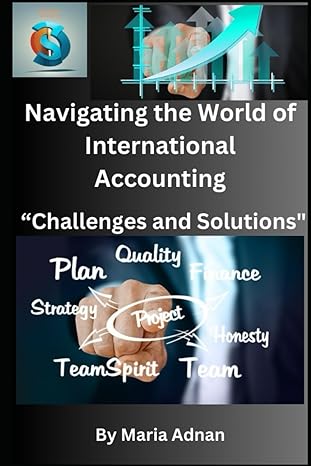Answered step by step
Verified Expert Solution
Question
1 Approved Answer
st 3 4 an 5 Chapter 14 HomeW8Pk K Calculate the net asset value (NAV) for a mutual fund with the following values: on 6.
st 3 4 an 5 Chapter 14 HomeW8Pk K Calculate the net asset value (NAV) for a mutual fund with the following values: on 6. tion 7 The NAV of the mutual fund is $per share. (Round to the nearest cent.) Data table (Click on the following icon in order to copy its contents into a spreadsheet.) Market value of securities held in the portfolio Liabilities of the fund Shares outstanding $6.8 billion $162 milion 306 million Print Done Clear Check answer estion list Question 1 Question 2 O Question 3 Match the following types of stock funds to the securities that would typically be found in each portfolio. a. Growth funds b. U.S. government bond funds c. Growth and income funds d. Life cycle funds e. Sector funds f. Index funds g. Balanced funds h. International funds 1. Small company funds J. Asset allocation funds k. Aggressive growth funds Question 4 O Question 5 O Question 6 O Question 7 COD a. The securities found in a growth fund would primarily consist of: (Select the best answer below.) OA federal agency securities OB. 65% of stocks from the technology industry. OC. securities that are tailored to investor characteristics OD. companies with strong eamings and some dividends. Chapter 14 Homework 6 7 O Points: 0 of 1 Zap Fund is the mainstay of your portfolio. The investment company just announced its year-end distributions. The long-term capital gain per share is $5.75, and the dividend per share is $2.48 Assuming the NAV increased from $49.45 to $55.58 during the year, calculate your total annual return Assuming the NAV increased from $49.45 to $55.58 during the year, your total annual return would be % (Round to two decimal places.) solve this i View an example Get more help- Clear all Check an m list on 1 apter 14 At the beginning of last year, Thomas purchased 100 shares of the Web.com Fund at an NAV of $29 65 and automatically reinvested at distributions. As a result of reinvesting. Thomas ended the Kyear with 118 shares of the fund with an NAV of $32.63. What was his total retum for the year on this investment? Thomas' total return for the year on this investment was %. (Round to two decimal places.) on 2 ation 3 estion 41 estion 5 uestion 6 Question 71 Clear all Check answer Help me solve this View an example Get more help- tion list estion 11 uestion 2 Calculate the after-withdrawal future value of $12.000.00 invested for 5 years in each share class in the table: In terms of costs, which would be the best investment for someone who knows the fund will be sold at the end of the 5-year period? Assume that each fund's gross (before fees) total retum is 10.00 percent per year The after-withdrawal future value of the Class A share in 5 years is $ (Round to the nearest cent.) Question 3 Question 4 Question 51 Question 6 O Question 7 Data table (Click on the following icon in order to copy its contents into a spreadsheet Cost Class A Class B Class C Front-end load 6.20 0.00 0.00 Back-end load 0.00 1.28 Declining 1% per year First year only Management fee 0.56 0.90 1.00 12-1 fee 0.30 0.50 090 Print Done Help me solve this View an example Get more help Clear all Click answer estion list Question 11 pter 14 Hom Part 1 of 4 O Points: 0 of 1 Melanie is considering purchasing shares in an international bond fund. She has limited her search to one open-end and one closed-end fund information on the funds follows: NAV Sales price Annual expenses YTD return Open-End $12.51 no-load 1.42% 13.33% Closed-End $21.66 $16.73 1.18% 13.77% a. How much would Melanie pay per share for the open-end fund? How much would she pay per share for the closed-end fund? Question 2 b. is the closed-end fund selling at a discount or a premium to NAV? c. Given both funds similar returns and expense ratios, would you recommend that Melanie purchase the closed-end fund? Why or why not? Question 3 a. The amount Melanie would pay per share for the open-end fund would be $ (Round to the nearest cent) Question 41 O Question 5 O Question 6 O Question 7 Help me solve this View an example Get more help- Clear all Check anewver Save stion list Question 11 Question 2 Question 3 Question 4 O Question 5 Question 6 O Question 7 K The reinvestment of capital gains and dividends can make a significant difference in your total return. Consider the following situation, to determine the difference reinvestment can make over a 5-year period Assume all distributions are made on the last day of the year at the closing net asset value (NAV). Ignore tax consequences for the scenarios in a and b, below a. Calculate the ending investment value plus the total of distributions received assuming no reinvestment b. Calculate the ending investment value assuming all distributions are reinvested c. Calculate and explain the difference a. The ending investment value plus the total of distributions received assuming no reinvestment is 5 (Round to the nearest cent.) Help me solve this View an example Get more help- Clear all Check
Step by Step Solution
There are 3 Steps involved in it
Step: 1

Get Instant Access to Expert-Tailored Solutions
See step-by-step solutions with expert insights and AI powered tools for academic success
Step: 2

Step: 3

Ace Your Homework with AI
Get the answers you need in no time with our AI-driven, step-by-step assistance
Get Started


